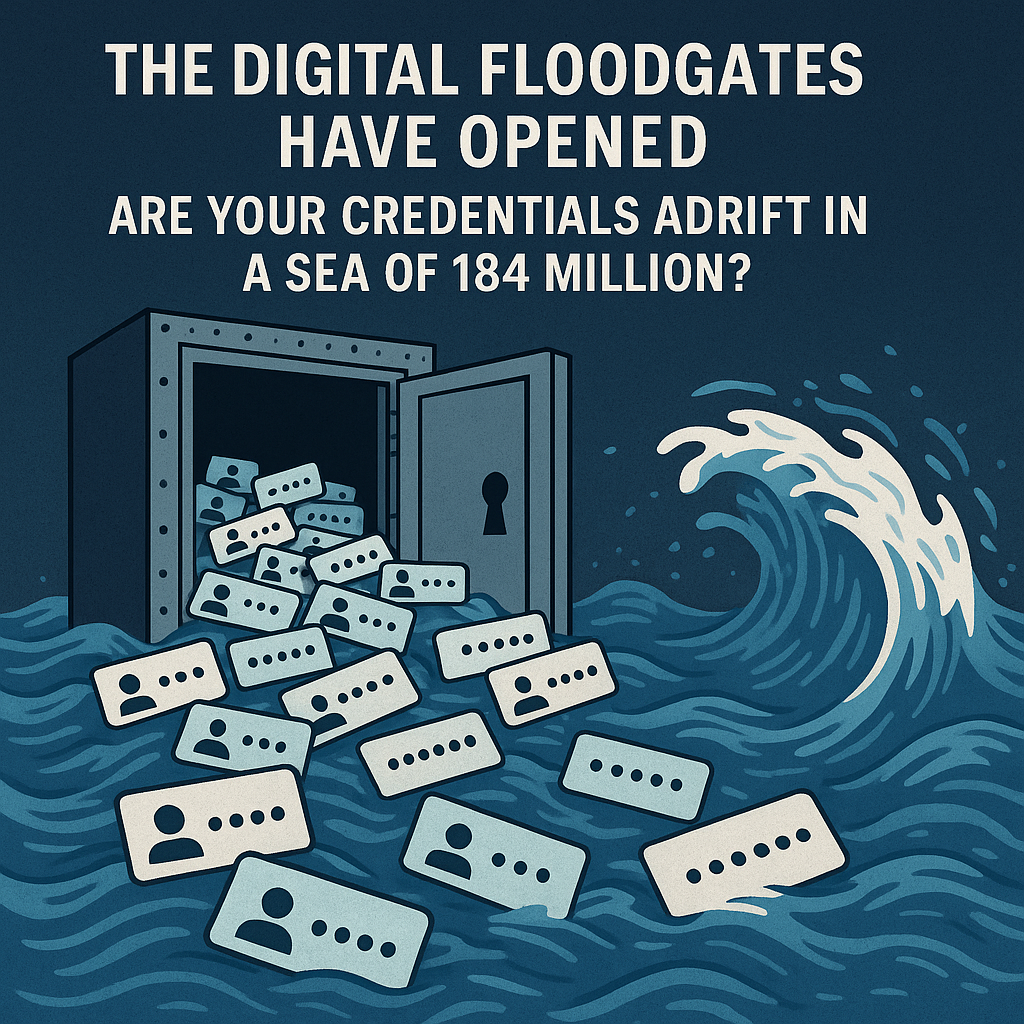184 Million Login Credentials Exposed: How to Stay Safe After the Massive Data Breach


Imagine a vault, not of gold or jewels, but of the very keys to your digital life – your usernames, your passwords, the secret handshakes that grant access to your most personal spaces online. Now, picture that vault lying wide open, unguarded, exposed to the harsh glare of the digital world. This isn’t a scene from a dystopian thriller; it’s the stark reality of a recent, massive data breach that has sent shockwaves across the internet.
Cybersecurity researcher Jeremiah Fowler unearthed a staggering 47GB database – a digital behemoth containing over 184 million unique login credentials. To put that number into perspective, it’s more than the entire population of many large countries. This isn’t just a leak; it’s a deluge, a potential tidal wave of compromised information threatening our digital identities.
What makes this breach particularly chilling is the sheer breadth and depth of the exposed data. It wasn’t just a single platform that suffered a crack in its defenses. The unprotected database held the keys to the kingdoms of tech giants like Apple (iCloud), Google (Gmail, Google accounts), and Meta (Facebook, Instagram). Think about what that entails: your photos, your emails, your social connections, perhaps even the backups of your entire digital existence now potentially within reach of malicious actors.
But the tendrils of this breach extend far beyond social media and email. The exposed credentials also included logins for banking platforms, health portals, and even government websites across at least 29 countries. Consider the gravity of this: access to your financial life, your medical history, and potentially even sensitive government services laid bare. Even the virtual playgrounds of children weren’t safe, with credentials for platforms like Roblox caught in this digital dragnet.
The nature of the exposed data adds another layer of menace. These weren’t encrypted hashes requiring sophisticated cracking techniques. No, these were often plaintext login credentials – the digital equivalent of leaving your front door wide open with the key under the mat. Anyone stumbling upon this treasure trove could immediately gain access to a victim’s accounts.
The discovery of 220 .gov email addresses within the exposed data from numerous countries, including the US, India, the UK, and France, injects a chilling element of national security risk into this already alarming situation. The potential for espionage, disruption, and the exploitation of sensitive governmental information is a stark reminder that in our interconnected world, a breach anywhere can have far-reaching consequences everywhere.
While the immediate reaction might be one of panic, it’s crucial to channel that energy into proactive measures. The fact that the hosting provider, World Host Group, swiftly took the database offline offers a small measure of relief, but the critical question lingers: how long was this digital Pandora’s Box open, and who might have peered inside?
So, what can you do amidst this digital storm? The recommendations are clear and urgent:
- Change your passwords immediately for all your critical accounts, especially those associated with Apple, Google, and Meta, as well as banking, health, and government services. Choose strong, unique passwords – think complex combinations of letters, numbers, and symbols.
- Enable two-factor authentication (2FA) wherever possible. This adds an extra layer of security, requiring a second verification step beyond just your password, making it significantly harder for unauthorized access even if your password is compromised.
- Avoid reusing passwords across multiple websites and services. If one password falls into the wrong hands, it shouldn’t unlock your entire digital life.
- Monitor your accounts for any suspicious activity. Keep a close eye on your email, bank accounts, and social media for any logins or transactions that you don’t recognize.
This breach serves as a stark reminder of the constant vigilance required in our digital age. It underscores the critical importance of robust security practices, not just for individuals but for the organizations entrusted with our data. The growing prevalence of infostealer malware, silently siphoning our credentials, and the potential for prolonged undetected access to sensitive systems paint a concerning picture.
Let this incident be a wake-up call. Review your digital footprint, fortify your defenses, and embrace a culture of cybersecurity awareness. In this interconnected world, our digital safety is not just a matter of personal responsibility; it’s a collective imperative. The floodgates may have opened, but we can still build stronger levees to protect our digital lives.